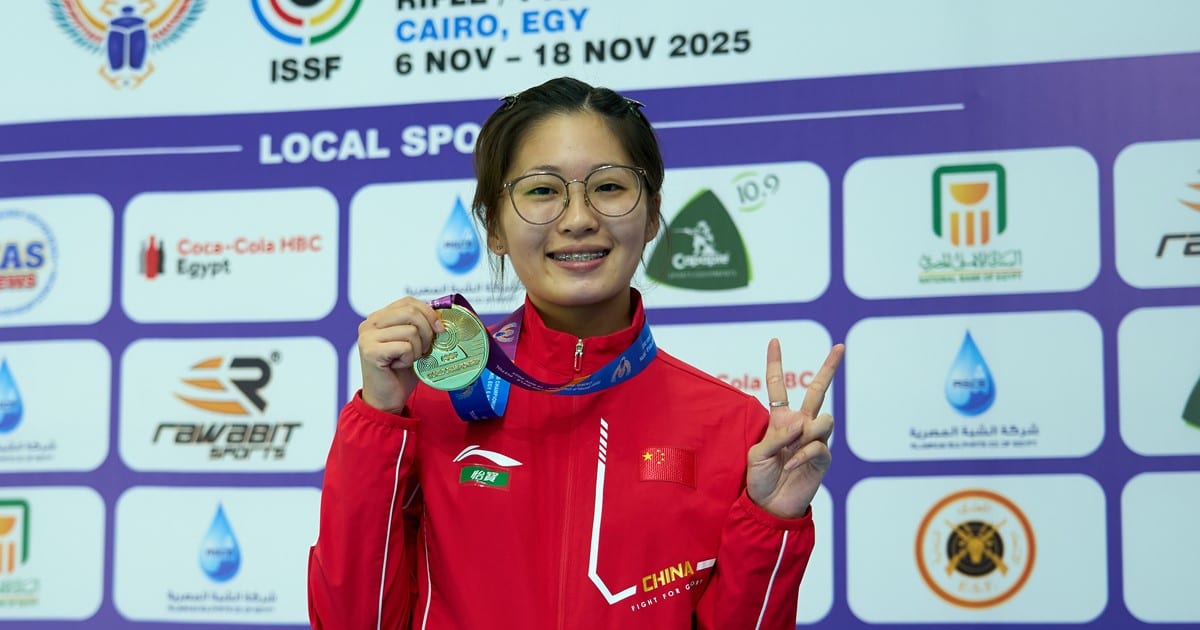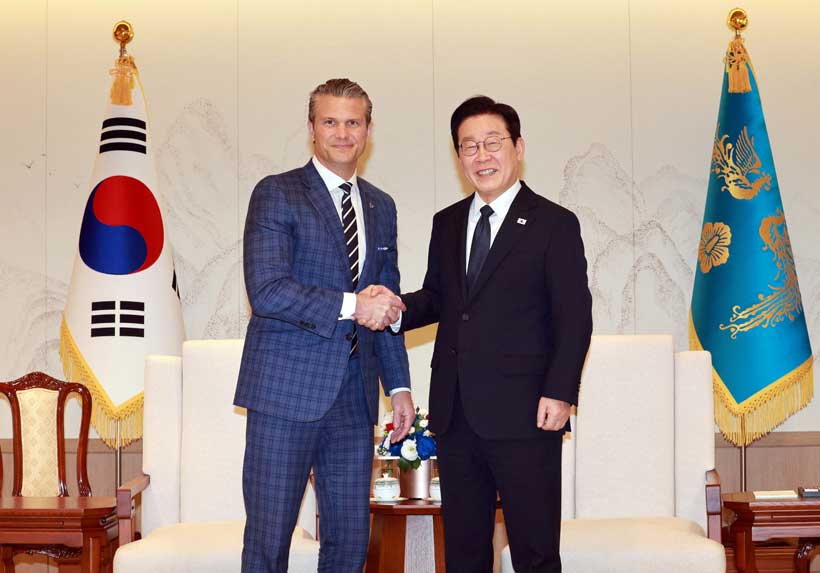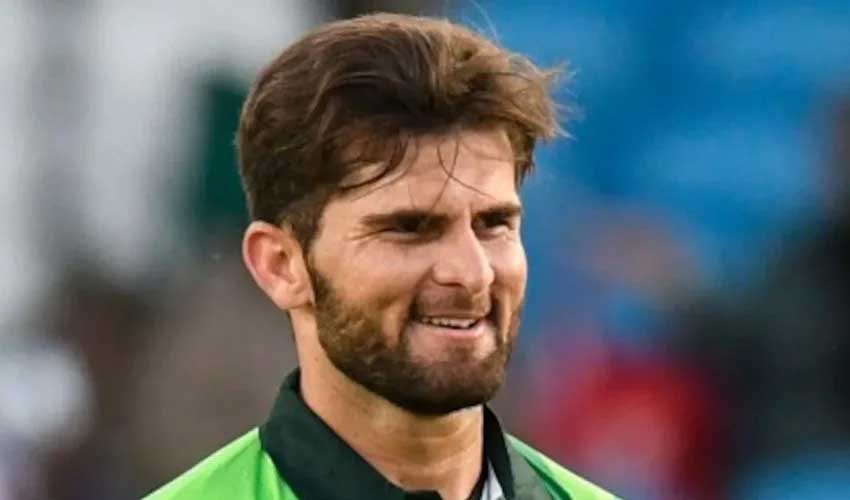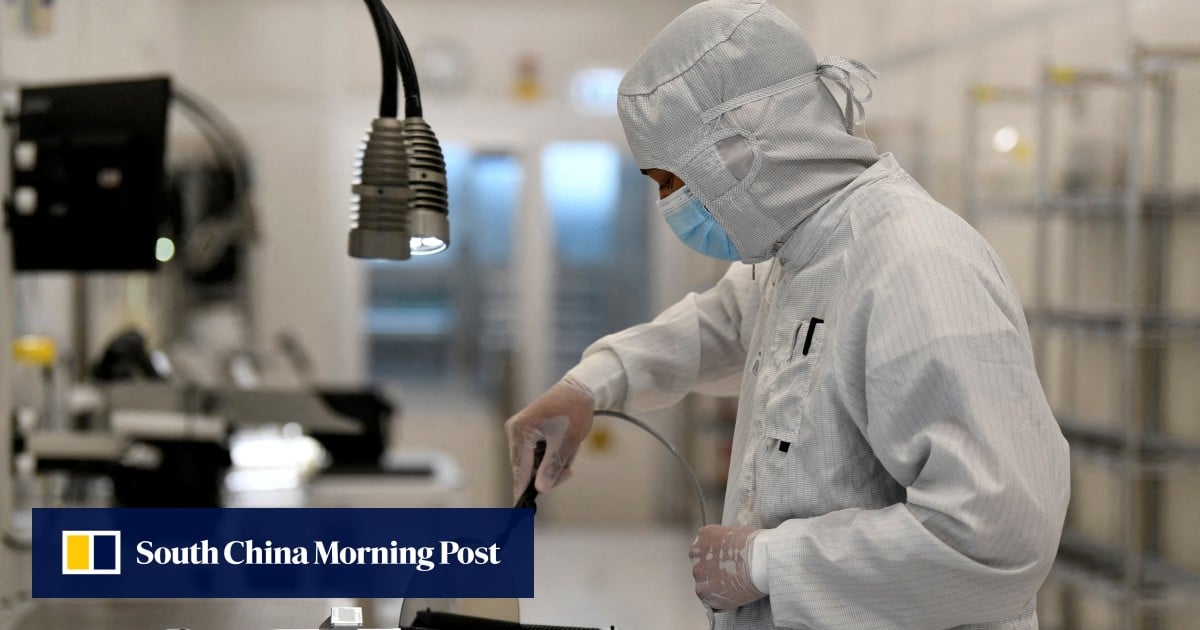In the men’s 50m pistol event, Ravinder Singh was the clear winner to upgrade the bronze he won at the last World Championship in Baku two years ago.
The 29-year-old Indian compiled a score of 569, 13 ahead of both Kim Cheongyong of the

In the men’s 50m pistol event, Ravinder Singh was the clear winner to upgrade the bronze he won at the last World Championship in Baku two years ago.
The 29-year-old Indian compiled a score of 569, 13 ahead of both Kim Cheongyong of the

North Korea’s Defence Minister No Kwang Chol has threatened to undertake “more offensive action” in response to U.S. security discussions with South Korea and the arrival of a U.S. aircraft carrier in the region.
This threat follows…

The vivid blue campaign signs with bold orange lettering were impossible to miss as Zohran Mamdani made his historic and improbable run for New York City mayor this summer.
On storefront windows and telephone poles from Queens to the Bronx,…

Pakistan ODI captain Shaheen Shah Afridi has said that the ODI series victory against South Africa was the result of teamwork, giving full credit to his players for their efforts.
Expressing his thoughts in a…

Gates Foundation recently announced $2.5 billion commitment over the next five years to advance women’s health initiatives worldwide. The funding aims to fuel dozens of projects, from life-saving maternal medicines to vaccines targeting…

EU trade chief Maros Sefcovic said on social media that, effective immediately, exports of the company’s chips to the bloc for non-military uses will not be subject to Chinese licensing requirements.
“My team and I have been in constant contact with the Chinese authorities, and welcome the confirmation provided today to the European Commission by Mofcom regarding the further simplification of export procedures for next-period chips destined for EU and global clients,” Sefcovic said.
“Mofcom will grant exemptions from licensing requirements to any exporter, provided that it is declared that the goods are intended for civilian use,” he added.
“Close engagement with both the Chinese and Dutch authorities continues as we work towards a lasting, stable, predictable framework that ensures the full restoration of semiconductor flows.”

Meghan Markle has officially made a return to her acting roots by announcing her role in a new movie, which is being filmed in Pasadena, California. The 44-year-old has been pictured on set of the film Close Personal Friends looking “very relaxed…

Compared with placebo, PCSK9 inhibition with evolocumab reduced the risk of first cardiovascular events among patients with atherosclerosis or diabetes and without a previous myocardial infarction or stroke, based on findings from the VESALIUS-CV trial presented at AHA 2025 and simultaneously published in NEJM.
Researchers randomly assigned 12,257 patients to receive either evolocumab (140mg every two weeks; n=6,129) or placebo (n=6,128). All participants had an LDL-C level of at least 90 mg per deciliter, 43% were women, 93% were white and the median age was 66 years. The two primary end points were a composite of death from coronary heart disease, myocardial infarction or ischemic stroke (3-point MACE) and a composite of 3-point MACE or ischemia-driven arterial revascularization (4-point MACE).
Overall results showed evolocumab reduced the risk of coronary heart disease death, heart attack or ischemic stroke by 25%. Participants in the evolocumab group also experienced a 19% reduction in the risk of death, heart attack, ischemic stroke or arterial revascularization over a median follow-up period of 4.5 years.
According to researchers, the dual primary endpoints were consistent across key subgroups, including in participants with high-risk diabetes without qualifying ASCVD, who represented roughly one-third of the total study population. In a substudy evaluating LDL-C levels over time, LDL-C was lowered by nearly 55% in the evolocumab group at 48 weeks, resulting in a median LDL-C level of 45 mg/dL compared with 115 mg/dL at enrollment. In contrast, LDL-C levels remained elevated among those in the placebo group, at a median of 109 mg/dL.
“The results from the VESALIUS-CV trial represent the first demonstration of improved cardiovascular outcomes with a PCSK9 inhibitor, or any nonstatin for that matter, in patients without a previous heart attack or stroke who are already being treated with a high-intensity lipid-lowering regimen ,” said Erin Ann Bohula, MD, DPhil, FACC, who presented the findings.
The study had several limitations to note, including that a small group of patients (8%) were not being treated with any cholesterol-lowering treatment at the beginning of the study. In addition, the majority of study participants were White. Further studies that include participants of various racial and ethnic backgrounds are needed to confirm if these findings apply across diverse populations, said Bohula.
In a related editorial comment published in NEJM, Chiadi E. Ndumele, MD, PhD, and Roger S. Blumenthal, MD, FACC, say the findings “represent an important step forward in clinical knowledge.” They write: “Although PCSK9 inhibitors had been shown to reduce the risk of atherosclerotic cardiovascular disease events among patients with previous myocardial infarction or stroke, this new trial has shown their clinical benefit in patients without previous myocardial infarction or stroke. With a longer follow up than earlier PCSK9 inhibitor trials … numerically fewer deaths were observed in the evolocumab group than in the placebo group. Although this result was not significant owing to the hierarchical testing approach, it is likely to reflect a true signal.”
Clinical Topics:
Diabetes and Cardiometabolic Disease, Dyslipidemia, Prevention
Keywords:
AHA Annual Scientific Sessions, AHA25, Dyslipidemias, Secondary Prevention

NetScout Systems reported second-quarter earnings that surpassed analyst expectations, with revenue reaching US$219.02 million and net income climbing to US$25.83 million, while also raising full-year guidance for both revenue and earnings per share.
This performance marked a reversal from a net loss in the prior year and highlighted operational momentum across both service and product segments.
We’ll look at how NetScout’s raised full-year guidance and strong earnings result shape its evolving investment narrative.
We’ve found 16 US stocks that are forecast to pay a dividend yield of over 6% next year. See the full list for free.
To be a shareholder in NetScout Systems, you need to believe in its ongoing ability to grow revenue by delivering reliable service assurance and cybersecurity solutions for enterprises amid rising network and threat complexity. The recent earnings beat and raised full-year guidance reinforce near-term optimism, but do not fundamentally shift the most relevant short-term catalyst: accelerating enterprise demand for cybersecurity products. The largest risk, rapid migration to cloud-native architectures and product consolidation, remains material and unchanged by these results. Among recent announcements, NetScout’s October launch of the Omnis KlearSight Sensor for Kubernetes directly addresses evolving customer needs in cloud environments, closely linked to the company’s ambitions around AI-driven innovation, a key catalyst underpinning expectations of expanded market opportunity and high-value contracts. Yet, while results looked strong, investors should watch for signs the risk from cloud migration and changing IT standards could test the resilience of NetScout’s core business…
Read the full narrative on NetScout Systems (it’s free!)
NetScout Systems is projected to reach $905.7 million in revenue and $49.6 million in earnings by 2028. This outlook assumes a 2.8% annual revenue growth rate, but reflects a decrease in earnings of $23.2 million from the current $72.8 million.
Uncover how NetScout Systems’ forecasts yield a $30.42 fair value, a 6% upside to its current price.
Two Simply Wall St Community members provided fair value estimates for NetScout, spanning from US$30.42 to US$52.91 per share. With accelerating cybersecurity demand cited as a core growth driver, you can review a range of independent views reflecting different assumptions about how well NetScout can seize this opportunity.
Explore 2 other fair value estimates on NetScout Systems – why the stock might be worth as much as 84% more than the current price!